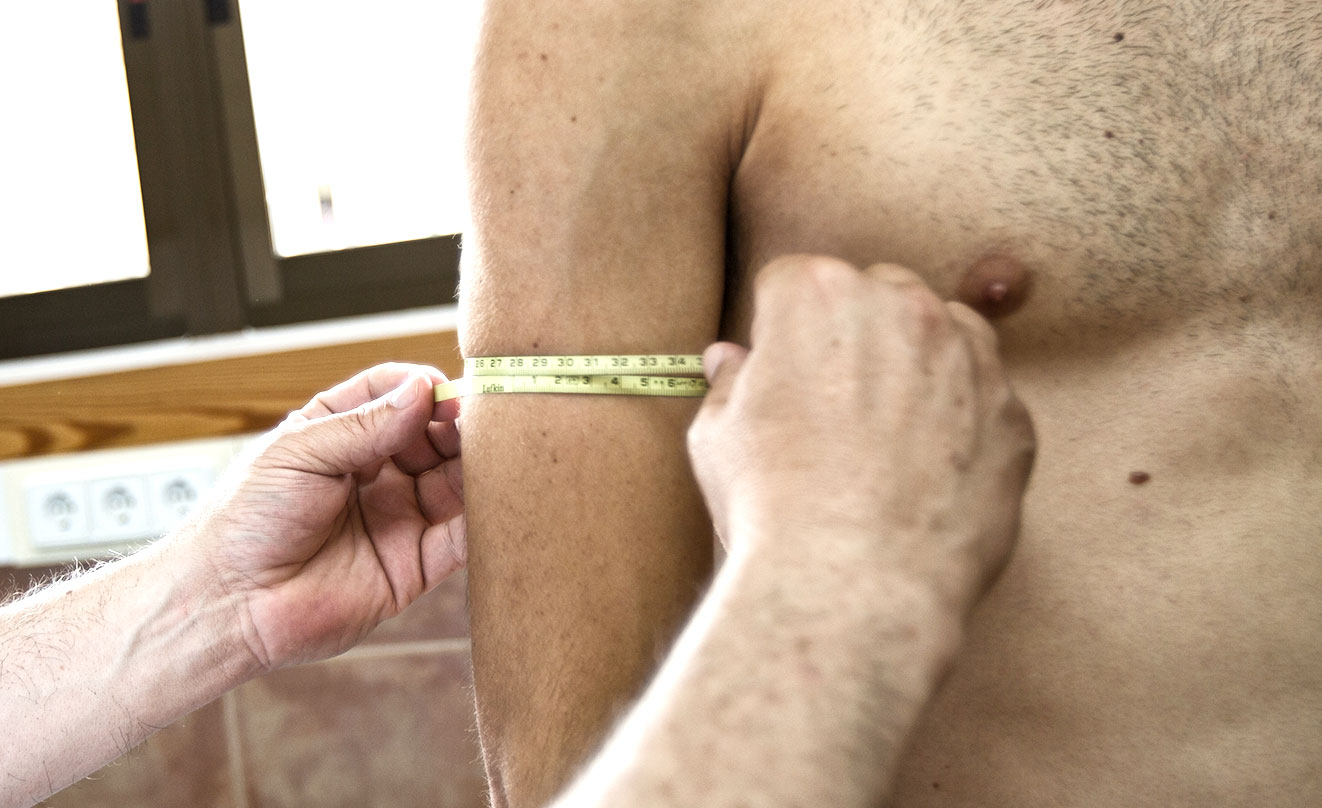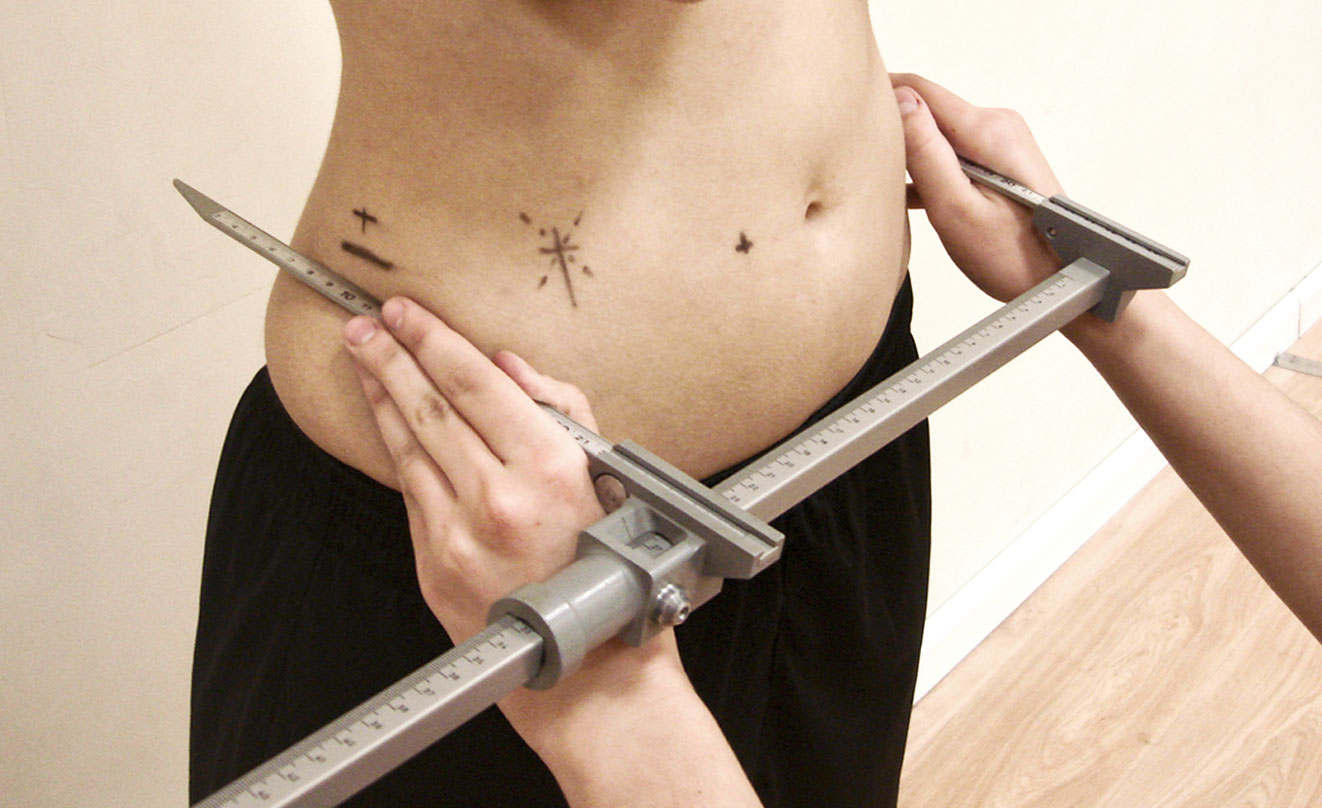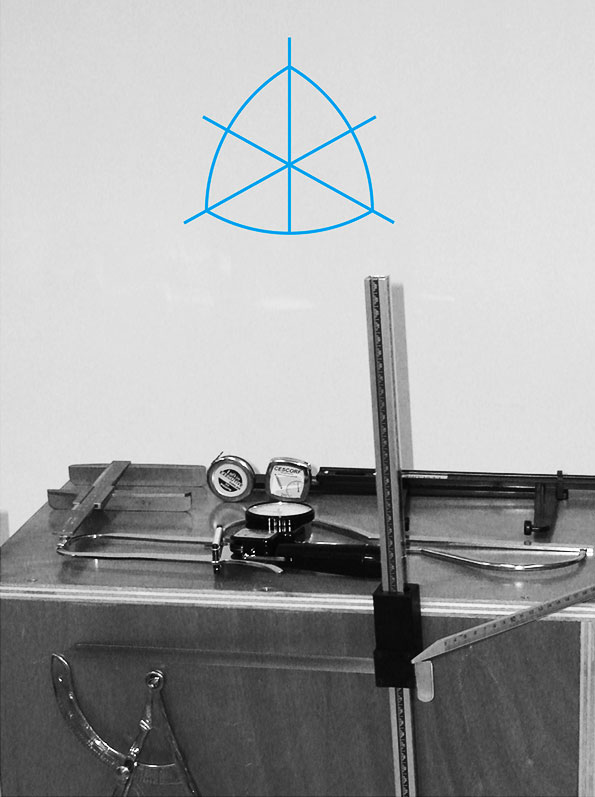 There is news from Isak!
There is news from Isak!
What is ISAK?
The International Society for the Advancement of Kinanthropometry.Kinanthropometry
The International Society for the Advancement of Kinanthropometry (ISAK) was founded as an organisation of individuals whose scientific and professional endeavour is related to kinanthropometry.
ISAK's purpose is to create and maintain an international network of colleagues who represent the world community transcending geography, politics and the bounds of separate disciplines in order to establish a dynamic area of scientific endeavour.
Kinanthropometry is the area of science concerned with the measurement of human body composition. As a result of changes in life styles, nutrition, activity levels and ethnic compositon of populations, changes to the distribution of body dimensions are forever occurring. Kinanthropometry is the interface between anatomy and movement. It takes the measurement of the human body and determines it's capability for function and movement in a range of settings.
ISAK has developed international standards for anthropometric assessment and an international anthropometry accreditation scheme (IAAS). The accreditation scheme is based on the concept of a four-level hierarchy. A key element in it is the objective maintenance of quality assurance by requiring that all levels have to meet initial technical error of measurement (TEM).
History
An event of historical importance which occurred at Conference 1986 was the founding of the International Society for the Advancement of Kinanthropometry. On July 20, 1986, at Jordanhill College of Education in Glasgow, Scotland, a meeting of 34 international delegates agreed to the foundation of "an organisation of individuals whose scientific and professional endeavor is related to kinanthropometry", the quantitative interface between human structure and function. It was decided to join the International Council of Sport Science and Physical Education (ICSSPE) as an official Committee. The meeting adopted a constitution specifying an Executive Council of nine members.
The International Society for the Advancement of Kinathropometry (ISAK) is the offspring of the International Working Group in Kinanthropometry (a branch of the ICSSPE Research Committee). This group was founded in Brazil, at the ICSSPE meeting in Brasilia, on 11 September 1978. The group focused on the promotion and upgrading of kinanthropometric research. Their efforts led to the establishment of three international congresses on kinanthropometry and the inclusion of specialised sections in other meetings, such as the Olympic Scientific Congress of 1984. As the number of colleagues with mutual interests increased, it was decided to move away from exclusiveness of small committee to openness of new organisation which would serve more directly all who might be interested.
Past Presidents and Secretary-Generals for ISAK
| Date | President | Secretary-General |
|---|---|---|
| 1986-1988 | Jan Borms | Jim Day |
| 1988-1992 | Gaston Beunen | Jim Day |
| 1992-1996 | Alan Martin | Jim Day (92-94), Mike Hawes (94-96) |
| 1996-2000 | J E Lindsay Carter | Mike Hawes (96), Kevin Norton (97-2000) |
| 2000-2004 | Mike Marfell-Jones | Kevin Norton (2000-02), Hans de Ridder (02-04) |
| 2004-2008 | Mike Marfell-Jones | Hans de Ridder |
| 2008-2012 | Hans de Ridder | Mike Marfell-Jones |
| 2012-2014 | Hans de Ridder | Clare Hencken |
| 2014-2024 | Mike Marfell-Jones | Francisco Esparza-Ros |
| 2024 to present | Francisco Esparza-Ros | Raquel Vaquero-Cristóbal |
ISAK AGMs and conferences
| Date | Conference | Country |
|---|---|---|
| 1986 | Glasgow | Scotland |
| 1988 | Seoul | South Korea |
| 1990 | Brussels | Belgium |
| 1992 | Malaga | Spain |
| 1994 | Victoria | Canada |
| 1996 | Dallas | EEUU |
| 1998 | Adelaide | Australia |
| 2000 | Brisbane | Australia |
| 2002 | Manchester | United Kingdom |
| 2004 | Thessalonika | Greece |
| 2006 | Melbourne | Australia |
| 2008 | Guanhzhou | China |
| 2010 | Estoril | Portugal |
| 2012 | Glasgow | Scotland |
| 2014 | Murcia | Spain |
| 2016 | Merida | Mexico |
| 2018 | Santiago de Chile | Chile |
| 2022 | Alicante | Spain |
| 2024 | London | United Kindow |
ISAK conference proceedings
- 1976 Quebec City, Canada. Kinanthropometry I.
- 1978 Leuven, Belgium. Kinanthropometry II (1980). M. Ostyn, G. Beunen and J. Simons (Eds.). University Park Press: Baltimore.
- 1986 Glasgow, Scotland. Kinanthropometry III. T. Reilly, J. Watkins and J. Borms (Eds.).
- 1990 Brussells, Belgium. Kinanthropometry IV. W. Duquet, J.A.P. Day (Eds). E.& F.N. Spoon.
- 1992. Málaga
- 1994 Victoria, Canada. Kinanthropometry V
- 1998 Adelaide, Australia. Kinanthropometry VI. K. Norton, T. Olds & J. Dollman (Eds). Sixth ISAK Conference October 13-16, 1998.
- 2000 Brisbane, Australia. Kinanthropometry VII. Pre-Olympic Congress.
- 2002 Manchester, England. Kinanthropometry VIII. T. Reilly & M. Marfell-Jones. 12th International Commonwealth Sports Sciences Conference 19-23 July, 2002.
- 2004 Thessaloniki, Greece. Kinanthropometry IX. M. Marfell-Jones, A. Stewart & T.Olds (Eds). Ninth ISAK Conference August 2004.
- 2006 Melbourne, Australia. Kinanthropometry X. M. Marfell-Jones & T.Olds (Eds). Ninth ISAK Conference August 2006.
- 2008 Guangzhou, China. Kinanthropometry XI. Hume, P.A. and Stewart, A.D., Eds. (2009). Kinanthropometry XI: 2008 Pre-Olympic Congress Anthropometry Research. Sport Performance Research Institute New Zealand, Auckland University of Technology, Auckland, New Zealand. 99 pages. ISBN: 978-0-473-15761-6.
- 2014 Murcia, Spain. Kinanthropometry XIV. Esparza, F., Marfell-Jones, M., Vaquero, R., Martínez, E. and Alacid, F., Eds. (2014). Kinanthropometry XIV. World Conference on Kinanthropometry. UCAM-MURCIA-SPAIN. 2014. Book of Abstracts, Universidad Católica de Murcia, Murcia, Spain. 152 pages. ISBN: 978-84-92986-73-6.
- 2016 Mérida, Mexico. Kinanthropometry XV. Ferreyro, F., Esparza, F. and Jones, M., Eds. (2016). Kinanthropometry XV: Proceedings of the 15th International Society for the Advancement of Kinanthopometry Conference, held in conjunction with the World Conference in Knanthropometry and Body Composition ISAK-UADY 2016, Ediciones de la Universidad Autónoma de Yucatán, Mérida, Mexico. 284 pages.
- 2019. Santiago de Chile, Chile. Ciencias del Ejercicio Físico y Salud, nº1. World Conference on Kinanthropometry Chile, 2018. 140 pages.
- 2022. Alicante, Spain. Proceedings of the XVII World Conference on Kinanthropometry. Marfell-Jones, M., Esparza-Ros, F., and Adhikari, A. International Journal of Kinanthropometry, Vol 2, No S1. 184 pages.
- 2024. London, United Kindow. XVIII World Conference on Kinanthropometry: Theory to Practice. 5th-7th August 2024. St Mary's University, London, UK. Book of Abstracts. St Mary's University Twickenham London. 20 pages.
Executive Committee
ISAK is managed by an Executive Council which consists of five officers and up to five additional council members.
Council sub-committees are designated as Working Groups or Committees.
Current holders of these positions are listed below.
To help enhance communication to ISAK members and the anthropometry community, the Council is also supported by an Editor for the ISAK Newsletter.
Read moreWorking Groups
ISAK has three working groups, the Standards and Accreditation Working Group, Special Projects and Archive Group and the Grant Committee, which assist the Council.
Current members of these Groups are listed below. Click on the email logo below the name of a group chair or member to send them an email.
Read moreQuality Policy
THE INTERNATIONAL SOCIETY FOR THE ADVANCEMENT OF CINEANTROPOMETRY (ISAK) was founded as an organization of individuals whose scientific and professional work is related to kinanthropometry.
The scope of the quality management system is Monitoring and verification of the management system and implementation of training actions in anthropometric measurement technique, according to ISAK (International Society for the Advancement of Kinanthropometry).
The main lines of commitments and action objectives of this policy are:
- Meet the expectations and satisfaction of members of the organization.
- Establish objectives consistent with this document.
- Comply with the applicable legal requirements or any requirement subscribed by the organization.
- Continuously improve the quality management system.
- Search for the correct control and identification in the management of the risks associated with the processes in an efficient manner.
- Create and maintain an international network of people that transcend the limits of separate disciplines in order to establish anthropometry as a dynamic area in scientific work.
- Operate an international anthropometric evaluation system to provide a vehicle for training and evaluation in anthropometric techniques.
ISAK Secretariat



